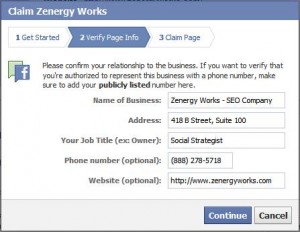It may be 2015, but several small to mid-size (and even major) businesses are still having trouble parsing out their social media marketing. From trying to hop on every rising new trend to posting ineffectively, there are so many ways to totally whiff it on social media. If you decide SMO is a direction you want to take with your business, there are several pitfalls you’re going to want to avoid. Here are some of the social media mistakes you’re still making and what to do to fix them.

Photo Credit: Jeff Sheldon
Not having a specific goal. Too many businesses get in on social media because they need to stake out their property, and then poke at it for a while before giving up entirely. These mediums have a very casual, conversational air about them, so maybe you’re not taking them seriously. If you’re going to commit, you need to decide what you want out of your social media – sales? traffic? signups? exposure? – and formulate a strategy to make it happen.
Spreading yourself too thin. With all the shiny new properties available these days, you may be tempted to create an account on every site you can find. Twitter, Facebook, Google+, Instagram, Pinterest, YouTube, Vine, Tumblr… let’s do it ALL! Unless you have a dedicated social media manager, you’re going to end up abandoning a lot of those properties. Sit down and decide which mediums will work best for your business, and select a few to focus on.
Refusing to spend a dime on advertising. For a long time, social media was considered “free” advertising. These days, most of the major companies have shareholders to consider, so they’ve changed their algorithms to favor businesses that shill out for their ads. If you’re hoping you can continue to gain traction without paying, you’re mistaken. Here’s the good news: social media marketing is still relatively inexpensive when compared to other forms of advertising while also remaining highly targeted. Learn the guidelines, create a budget, and start boosting! Facebook is driving significant referrals, so don’t discount it.
Not having a direction or using an editorial calendar. If you’re still relying on silly-but-irrelevant posts for your user interaction, you have a problem. Don’t wing it. Tying back around to having a specific goal in mind, craft your content and posting schedule to effectively reach that goal. Planning ahead creates less work in the long run and allows for a QC check.
Handing the responsibility over to someone who can’t make it a priority. In the past, many companies handed the keys to Facebook and Twitter over to an intern or made it a tacked-on responsibility of another employee. Unsurprisingly, this led to a fair few nationally publicized egg-on-face incidents. Your social media marketing plan should be treated like any other advertising responsibility – it should go to a dedicated individual who can pay it its proper due. If you wouldn’t let someone handle your print or email campaigns, don’t let them handle social media.
Not creating a social media policy. It’s absolutely essential to create a social media policy that dictates how your business will be represented online. This isn’t something you can leave up to chance. Sit down and clearly decide what is and isn’t appropriate to post, the language to be used, the policy for dealing with irate customers on a public page, etc.
By following these tips, you’ll be ahead of the curve with your social media (or at least caught up). The most important thing to remember is to take SMO marketing just as seriously as you’d take any other advertising or marketing endeavor, and dedicate the appropriate resources in order to see results! For more information, contact us here at Zenergy Works anytime.
Other Services
| Best Local SEO Company | National SEO | Geo Targeted SEO |

















